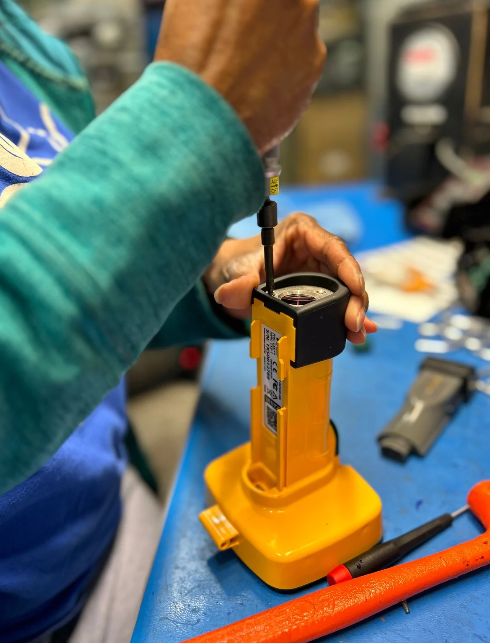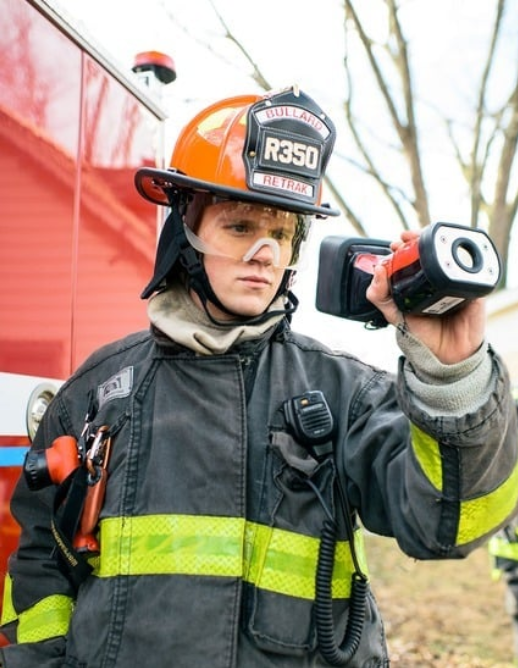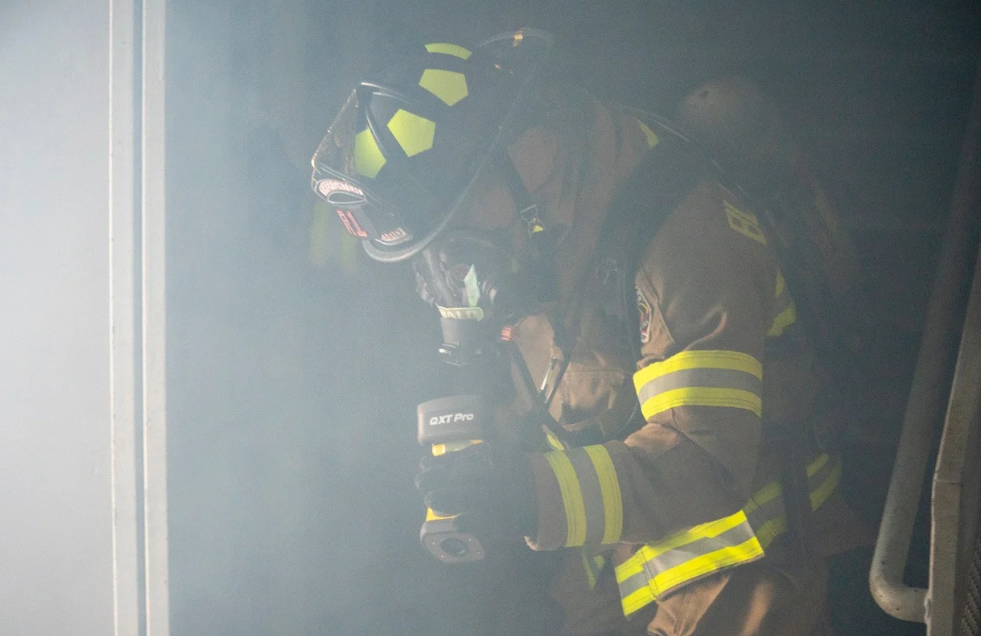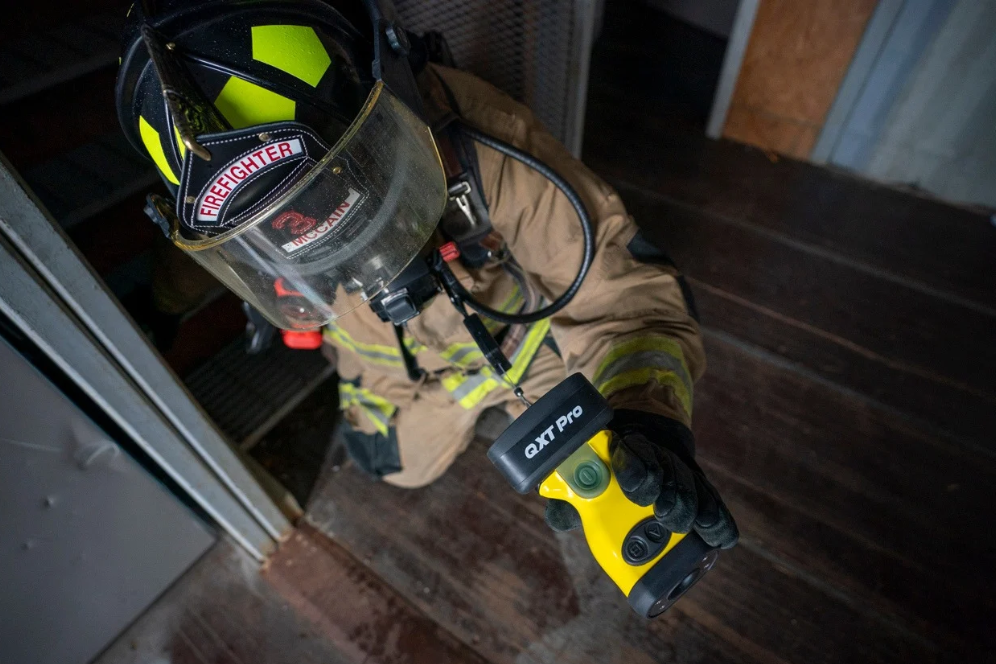Thermal imagers are indispensable tools on the fireground, providing critical visibility in hazardous conditions. To help ensure they operate reliably during emergencies, preventative maintenance is essential. A well-maintained thermal imager improves performance, extends its lifespan, and prevents costly repairs. For buying committees and experienced firefighters, adopting a proactive maintenance routine ensures equipment is ready for action while aligning with broader operational and budgetary goals.
Why Preventative Maintenance Matters
- Operational Readiness
Thermal imagers must perform reliably during emergencies. Regular maintenance can confirm they are ready to guide firefighters through hazardous environments without failure.
- Cost Efficiency
Routine upkeep reduces the risk of expensive repairs or premature replacements, helping departments stretch limited budgets.
- Enhanced Safety
Properly maintained imagers reduce the risk of malfunctions that could compromise firefighter safety or mission success.
- Sustainability
By extending the lifespan of thermal imagers, regular maintenance reduces waste and supports environmentally responsible practices.

Key Maintenance Practices for Thermal Imagers
A proactive approach involves daily, monthly, and situational maintenance routines.
Daily Checks
- Inspect for Damage: Examine the device for cracks, loose buttons, or other visible signs of wear.
- Clean the Lens: Clean the lens with approved materials to remove dirt, smoke residue, and debris that may obstruct visibility.
- Check the Display: Verify the screen is free of smudges or particles that could interfere with thermal readings.
- Battery Health: Monitor charge levels, store batteries correctly, and follow manufacturer guidelines to prevent degradation.
Monthly Maintenance
The following is a list of items to look for during monthly inspections or after major incidents:
- Exterior Condition
- Inspect the housing for cracks, dents, or excessive wear.
- Test buttons and controls to confirm they function properly.
- Check seals and gaskets for damage to maintain water and dust resistance.
- Lens and Display
- Clean the lens carefully, checking for scratches or damage that could impair image quality.
- Inspect the display for dead pixels or distortion that might impact usability.
- Battery Performance
- Test battery runtime in controlled conditions.
- Look for swelling, leaks, or corrosion, and replace any compromised batteries immediately.
- Make sure spare batteries are charged and stored correctly.
- Accessories and Connectivity
- Verify chargers, docks, and other accessories are functional.
- Inspect mounting hardware to make sure the device is securely stored during transit.
- Performance Testing
- Power on the device and establish that it boots up without delay.
- Test thermal readings for accuracy using a heat source in a controlled environment.
- Check all imaging modes and temperature measurement functions for smooth operation.
- Documentation
- Record findings, repairs, and replacements in your department’s maintenance log. Thorough records are essential for warranty claims and tracking equipment health.
Situational Maintenance
After exposure to extreme conditions, such as high heat or water submersion, perform additional inspections:
- Recheck seals and gaskets for breaches.
- Verify lens clarity and display functionality.
- Confirm that battery performance has not been impacted.

Training for Maintenance
Firefighters should be equipped with basic maintenance skills to establish consistent care across the team. A sample training session might include:
- Lens Cleaning Techniques: Demonstrate safe cleaning methods to prevent scratches or residue buildup.
- Battery Care: Teach proper charging, storage, and replacement protocols.
- Inspection Skills: Show how to identify early signs of damage or wear, such as hairline cracks or loose buttons.

Visual Summary: Maintenance Workflow
To make this process more actionable, here’s a flowchart for maintenance:
Daily Checks ➡ Monthly Inspections ➡ Post-Incident Inspections ➡ Performance Testing ➡ Record Maintenance Logs
This simplified workflow helps ensure no critical steps are overlooked and provides a consistent routine for your team.

Case Study: Improved Readiness Through Routine Maintenance
A suburban department implemented a structured maintenance plan after experiencing multiple thermal imager failures during high-risk calls. By standardizing daily and monthly checks and training all personnel in preventative care, the department reduced device malfunctions by 60% over two years. This proactive approach saved money on repairs and reinforced firefighter confidence in their tools.

Best Practices for Long-Term Maintenance
- Use Manufacturer Resources
Follow manufacturer guidelines for cleaning, storage, and firmware updates to maintain warranty coverage and ensure optimal performance.
- Assign Responsibility
Designate specific personnel to oversee maintenance schedules and compliance, creating accountability within the team.

Conclusion
Preventative maintenance is an investment in the reliability, longevity, and sustainability of your thermal imagers. By adopting consistent routines, training your team, and maintaining thorough records, your department can reduce costs, improve readiness, and enhance safety.



